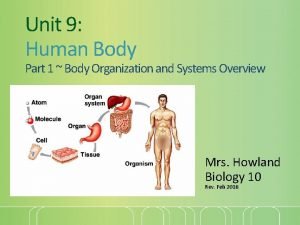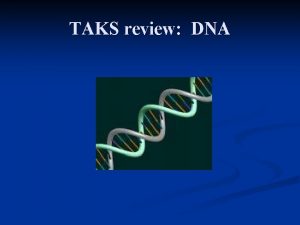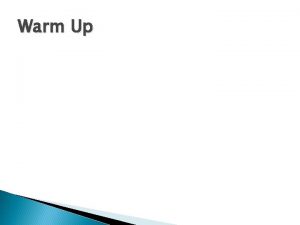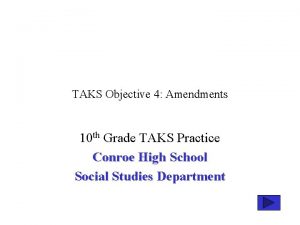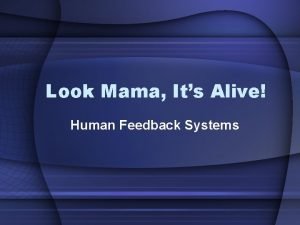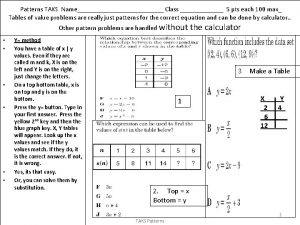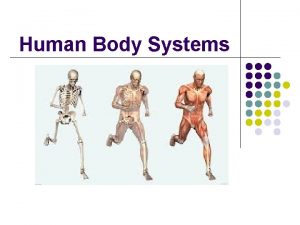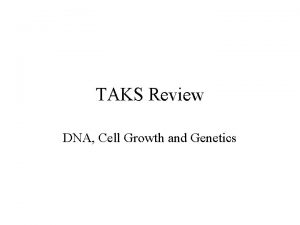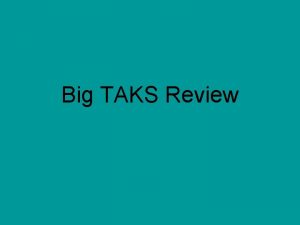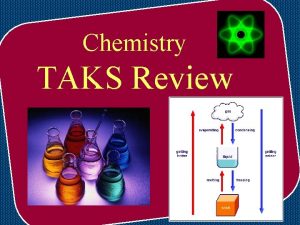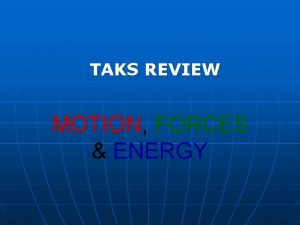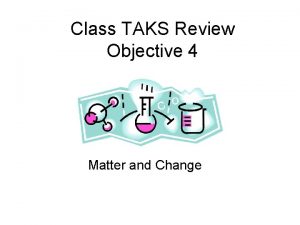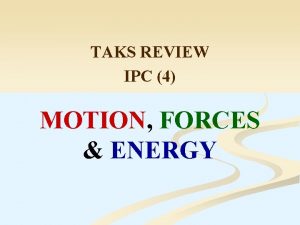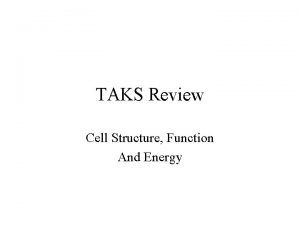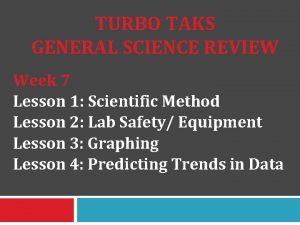TAKS Review Human Systems For each system you






























- Slides: 30

TAKS Review Human Systems

For each system you should ØRecognize a picture of the system ØBe able to describe its function ØRelate systems to each other

Skeletal System Function: • Provides a framework for the tissue of the body • Protects the various structures/organs such as spinal cord, lungs, and heart. • Muscles are anchored to the bones to allow for movement. • Bones also produce blood cells, and store vital minerals.

Functions Movement Warmth Posture Smooth muscle allows for the contraction of organs (moves food along the intestines) and blood vessels (pushes blood through). Cardiac muscle is responsible for the pumping of the heart. Skeletal muscle allows for all movement of the body. Muscular System

Practice Question Which of the following is directly caused by muscle action? A B C D Regeneration of nerves Healing of wounds Release of hormones Extension of limbs D

Circulatory System • Transport blood to every part of the body. • Blood carries gases, nutrients, and waste products to and from muscles and organs. • What systems does the circulatory system interact with?

Immune System • The lymph nodes and lymph vessels help to filter out antigens (disease causing microorganisms). • The tonsils, thymus gland, spleen, and bone marrow are also involved in the immune system. • Many immune cells (like WBCs, Helper T cells and macrophages) travel throught the body in the blood. • The function of the immune system is to protect the body from infections and antigens. Remember: White Blood Cells are involved in the immune response. HIV attacks Helper T cells. Because Helper T cells alert other WBC’s of an infection, and they are destroyed by HIV, people with AIDS die of everyday illnesses.

NORMAL IMMUNE RESPONSE Macrophages are street cops y nd a s BAD GUY (pathogen) ” st e r r a s“ e ag up. h op ack r c Ma l for b cal gu d ba st a e r r a p to l e h n s Send y pathoge o destr Gets the call nd HELPER T CELL

How HIV infects. Macrophages are street cops nd a s y BAD GUY (pathogen) ” st e r r a s“ e ag up. h op ack r c Ma l for b cal gu d ba HIV KILLS HELPER T Cells lp to e h s send y E N NO O nd destro ta arres en g patho PATHOGEN NOT DESTROYED No one answers HELPER T CELL

Respiratory System Provides the body’s organs and muscles with oxygen, and also to dispels carbon dioxide (cellular waste) from the body. • Tiny air sacs called alveoli are where gas exchange occurs with the blood.

Digestive System Mouth Pharynx Esophagus Liver Stomach Large Intestine Small Intestine Villi Rectum Anus The function of the digestive system is to digest food and provide nutrients to the body. It also helps to regulate metabolism, as well as eliminate solid wastes.

Practice Question How is the circulatory system related to the digestive system? A B C D The brain stem controls the heart rate. Blood carries nutrients to body cells. Stomach muscles contract and expand. The pharynx is a passageway for air and food. B

Practice Question Nutrients from digested food move from the digestive system directly into the — A circulatory system B integumentary system A C excretory system D endocrine system

Practice Question Because chewing begins the breakdown of food before it is swallowed, digestion starts in the mouth and throat. Which of the following systems aids most in this early stage of digestion? A Immune system B Excretory system C C Muscular system D Respiratory system

Practice Question The small intestine is to nutrient absorption as the blood is to nutrient --A B C D assimilation distribution regulation elimination B

Practice Question According to this information, some organs of the gastrointestinal tract — A fit in more than one organ system B perform only one function at a time C supply the body with platelets D produce soluble vitamins A

Excretory System • Excretion is the removal of metabolic wastes from the body, including toxic chemicals, excess water, carbon dioxide and salts. • Excretory Organs – Skin – Lungs – Kidneys Kidney Ureter Urinary Bladder Urethra

Practice Question How is the excretory system most likely to respond when an animal is thirsty? A B C D By relaxing the smooth muscles By retaining body fluids By absorbing heat from lymph glands By releasing hormones B

Reproductive System Structure: The FEMALE reproductive system consists of the ovaries (produce eggs), fallopian tubes, the uterus, and the vagina. Structure: The MALE reproductive system - testis (produce sperm), vas deferens (tube to transport sperm), urethra (continuation of vas deferens), and the penis.

Endocrine System • Function: Consists of glands that secrete hormones. These hormones play a key role in the regulation of digestion, metabolism, growth, and homeostasis. • Structure: network of glands including the pituitary, thyroid, thymus, pancreas, testes, ovaries, adrenal, and parathyroid glands.

Dendrite Nervous System Axon • Central Nervous System: Brain and spinal cord control and coordinate functions throughout the body • Peripheral Nervous System: Neurons are specialized cells that transmit impulses throughout the body to send messages. Cell body Myelin sheath Node of Ranvier Axon terminals

Integumentary System • Function: Maintain equilibrium (homeostasis) within the body. – regulating body temperature. – protective layer to the underlying tissues. • Structure: Consists of the skin (dermis and epidermis), hair, and nails

Practice Question The medulla, part of the brain stem, reacts quickly to increased levels of CO 2 in the blood and stimulates a response from the — A excretory system B immune system C C respiratory system D integumentary system

Practice Question Which system is responsible for producing enzymes that aid in breaking down substances to be absorbed for the body’s growth and repair? F Digestive system F G Reproductive system H Respiratory system J Skeletal system

Practice Question Which system of the body would be directly affected if a large number of T cells were attacked by a virus? A. Cardiovascular B. Immune C. Endocrine D. Respiratory B

Practice Question Pelicans prevent serious wing damage by entering the water in the manner shown above. Which two organ systems in the pelican work together the most to accomplish this maneuver? A Circulatory and nervous systems B Nervous and muscular systems C Muscular and digestive systems D Digestive and circulatory systems B

Practice Question Hemoglobin carries oxygen to body cells. Which body system contains hemoglobin? A Circulatory system B Respiratory system C C Endocrine system D Nervous system

Practice Question When a person is frightened by a wild animal, some organ systems immediately become active, while others are suppressed. Which of these systems is likely to be suppressed? A B C D Muscular system Respiratory system Endocrine system Digestive system D

Practice Question Which structure in the upper arm is responsible for raising the lower arm? A. 1 B. 2 C. 3 D. 4 C

Practice Question Red marrow is the principal tissue that produces red blood cells in humans. In which body system is red marrow found? F. Integumentary system G. Respiratory system H. Nervous system J. Skeletal system J
 Moore finance taks
Moore finance taks Unit 9 human body systems review
Unit 9 human body systems review Human body systems final exam
Human body systems final exam Formuö
Formuö Typiska novell drag
Typiska novell drag Nationell inriktning för artificiell intelligens
Nationell inriktning för artificiell intelligens Ekologiskt fotavtryck
Ekologiskt fotavtryck Shingelfrisyren
Shingelfrisyren En lathund för arbete med kontinuitetshantering
En lathund för arbete med kontinuitetshantering Underlag för särskild löneskatt på pensionskostnader
Underlag för särskild löneskatt på pensionskostnader Tidbok för yrkesförare
Tidbok för yrkesförare Sura för anatom
Sura för anatom Vad är densitet
Vad är densitet Datorkunskap för nybörjare
Datorkunskap för nybörjare Stig kerman
Stig kerman Mall debattartikel
Mall debattartikel Autokratiskt ledarskap
Autokratiskt ledarskap Nyckelkompetenser för livslångt lärande
Nyckelkompetenser för livslångt lärande Påbyggnader för flakfordon
Påbyggnader för flakfordon Tryck formel
Tryck formel Publik sektor
Publik sektor Kyssande vind
Kyssande vind Presentera för publik crossboss
Presentera för publik crossboss Jiddisch
Jiddisch Plats för toran ark
Plats för toran ark Treserva lathund
Treserva lathund Epiteltyper
Epiteltyper Bästa kameran för astrofoto
Bästa kameran för astrofoto Centrum för kunskap och säkerhet
Centrum för kunskap och säkerhet Byggprocessen steg för steg
Byggprocessen steg för steg Mat för unga idrottare
Mat för unga idrottare

